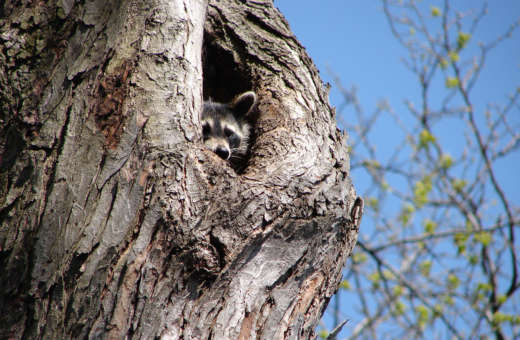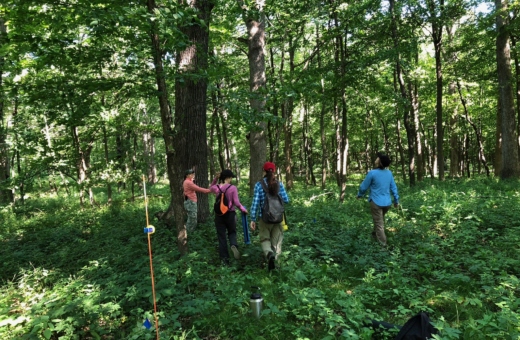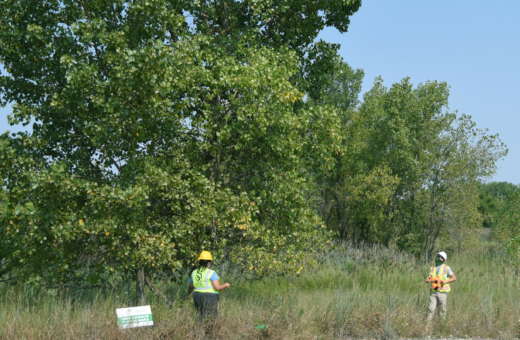Controlled Fires Help Native Plants and Animals Thrive
As you stroll along a trail this spring, you may come across a patch of blackened undergrowth or get a whiff of smoke. That’s good news—evidence of a prescribed burn, where the Arboretum has used fire to improve the health of a natural area.
“You may not think of fire as a tool, but that’s what it is,” says Mark McKinney, manager of natural resources and collections. “It’s the most powerful thing we have in our toolbox.”
Why is fire so important? Because it sustains native communities of plants and animals.
“The ecosystems found here have depended on fire for thousands of years,” says Kurt Dreisilker, head of natural resources and collections horticulture.
Fire burns off undergrowth, including invasive plants, and reduces much of the leaf litter to ash—quickly releasing its nutrients. It helps keep ecosystems in balance by eliminating competitive seedlings. In a burned area, more light reaches the forest floor, so wildflowers can sprout from seeds and fire-tolerant oaks can grow.
Before settlers arrived in the 1830s and 1840s, these useful fires set in prairies and woodlands by lightning and by Indigenous Peoples, helped native plants and animals thrive.
For the next century, settlers put out fires to protect homes and farms. To bring back this critical element of Midwestern nature, the Arboretum has been conducting prescribed burns for more than 50 years, Dreisilker says. The fires are meticulously planned and carefully controlled, carried out on one small patch at a time by trained staff and volunteers.
Before a burn, the Arboretum gets all required permits, notifies local agencies, and considers the weather. Crew members create firebreaks and carry backpack tanks of water to quickly suppress any stray sparks. Meanwhile, Arboretum scientists study the effects of burning on its ecosystems. Over the years, it’s been learned that burned areas support a greater diversity of animal and plant species, including spring-blooming wildflowers, Dreisilker says. The Arboretum’s tree collections are never burned; they are tended by skilled horticulture crews.
If you find a blackened patch, come back in a couple of weeks and marvel at the new burst of green.
“It’s amazing how quickly the land responds to burning,” Dreisilker says. “It rejuvenates the landscape.”
To learn more about prescribed burns, check out these Frequently Asked Questions.



